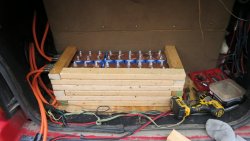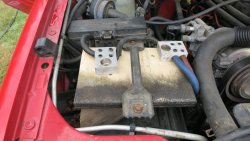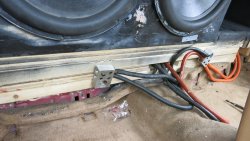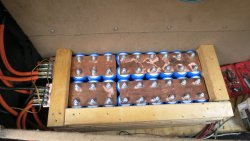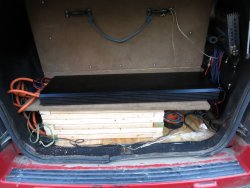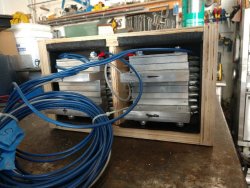The only way I'd consider 5S is if you were running, say, my Jeep stock which only charges at 13.6-13.8. Most vehicles will probably attempt to charge over 14.5 at lease occasionally which will be bad for them. Stick to 6s. I expect 120AH would be rock solid for 5K (more on that later).
So 1/8X4" copper bar was like 210-220 per 12 foot section after shipping. Barely even considered aluminum. By the time you get thick enough to get around the inferior ampacity you're almost the same price as copper anyway and why cheap out? I called up Storm, they seem to do mostly custom bus bars, talked to their tech, decided on copper... no regrets. Nuts and washers were just whatever from Fastenal but still 75 pieces per bank plus some 1/4 20s to bold ring terminals, used 2 hardened drill bits 1/2" plus the 1/4" one, took some life off my step bit, bought a big tube of dielectric grease and some cutting oil, sawzall blade, and one of those sanding flap discs for my angle grinder. All in probably 600$ in consumables and hardware to do these two banks. The point being whatever you do, you'll need to either buy bussing solution (there's a couple existing ones that were less cost effective) and you'll need to buy other odds and ends before all said and done.
For one, we definitely need something non conductive, and we want these to be snug in the box and the box very securely fastened to the vehicle.... also need to figure out a way to easily connect wire in and out. I wound up using 2x3s since I have a pile of them I got for free.
I've run a couple Stetsom.... had great luck with Brazilian myself but they are considered time bombs and lots of shops won't repair them. I'd consider buying one on
ebay/
amazon with 3rd party warranty, otherwise I'd be hesitant still.
That's the limitations of the battery chemistry. Way beyond my pay grade, but that's why these LTOs are 2.7V and the LiFePO4 are 3.5..... this lower cell voltage is considered one of the downsizes of the technology. Same as super caps, something about the technology only allows for low voltage.
Series gives you voltage parallel gives you reserve (amp hours). Each S adds 2.3V nominal, each P gives you 40AH (of these cells I'm using anyway, but you get the idea).
Yes. That's one of the big things that pushed me into these 40AH cells over the smaller A123 LiFePO4 cells I was shopping out before. I believe they could probably make these bigger still as far as reserve (AH rating) but probably will never make LTO greater than 2.3V nominal. That's likely a hard limit based on their chemistry.

